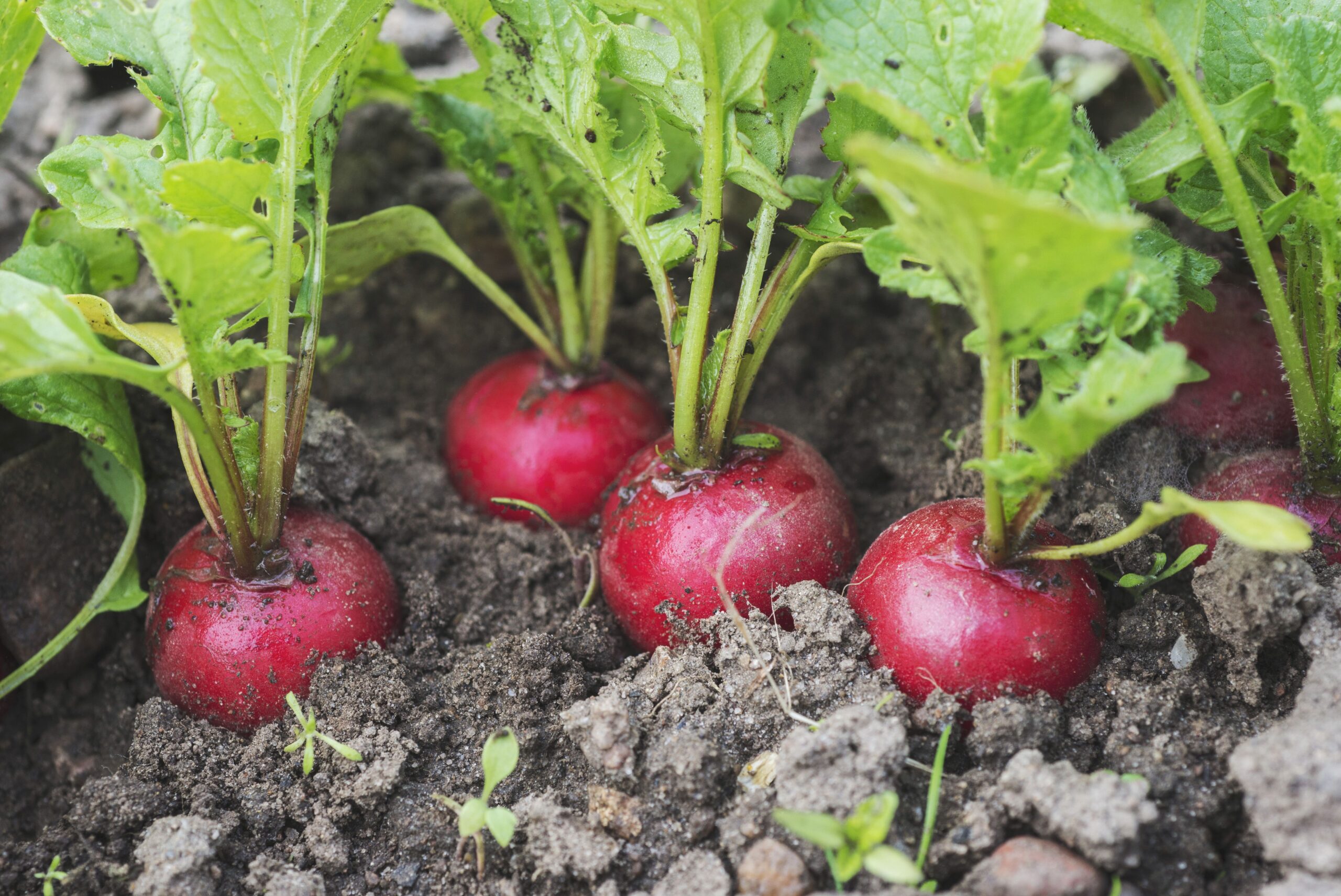Key Points
- Radishes are one of the easiest crops to grow for beginner and experienced gardeners.
- Depending on the variety, radishes should be ready to harvest between 30 and 60 days.
- Timing and spacing are important to successfully grow radishes.
From garden to table, radishes are one of the fastest and easiest crops to grow. Early types can be ready in just 28 to 30 days, while other varieties take up to two months. This article looks at different radish varieties, how to know when they’re ready to pick, and some extra tips for growing these crunchy snacks.
How Long Does It Take to Grow Different Radish Varieties?
Radishes vary in size and shape from nearly perfect, 1-inch round, red roots with white centers to long, white, tapered roots that resemble parsnips or carrots. Here’s when to plant seeds for some popular varieties and when to expect a harvest.
- French breakfast: Plant this French heirloom four to six weeks before final frost and one month before first frost for autumn harvest. These red and white elongated radishes are ready in 28 to 30 days.
- Watermelon: Plant this large, sweet variety as soon as ground can be worked in spring and again in mid to late summer for autumn harvest. A good stretch of cool weather is needed to grow this Chinese heirloom, and an average 60 days to mature.
- Easter egg: For spring/summer harvest, plant this colorful radish when soil temperature reaches 45°F. Plant a month before first frost for autumn harvest. This mix of purple, white and red radishes is ready for harvest in 28 to 30 days.
- Daikon: Known as the ‘winter radish,’ the standard, long, white Daikon variety needs 60 days of cool weather to mature. Spring plantings can be successful in northern growing zones, but seeds are more often sown in late summer for autumn harvest.
Want more gardening tips? Sign up for our free gardening newsletter for our best growing tips, troubleshooting hacks, and more!
5 Signs Radishes Are Ready for Harvest
Radishes are a cool season crop with days to harvest affected by temperature. Since radish roots grow below the soil where they can’t be seen, these five clues tell you when they reach the right size to pull.
- Seed packets give information about when to harvest your radish variety. Mark the expected date on your gardening calendar to begin checking plants for readiness.
- Check foliage and measure the length of the leaves. If the plant has just two or three leaves, there won’t be much radish to harvest.
- Look for shoulders (the top of the root) to break the soil surface; this way, you can see if the radish has reached mature size.
- When leaves are lush and the right length for your variety, use your index finger to clear away soil at the base. You’ll be able to see the top of the root and if it’s the right size.
- When the number of days to maturity arrives, pull a plant from your radish patch to see if the crop is ready.
Factors That Affect Growth Time
Radishes grow best in full sun and cool, consistently moist soil. Here are some factors that affect harvest times and crop quality.
- Not enough light: Plants in shade put out more leaves and less root. Harvest is delayed and radishes may be tough and bitter.
- Not enough moisture: Radishes bolt and turn pithy before they can mature.
- Lack of thinning: Crowded plants take longer to form roots with many producing small radishes or no root at all.
- Too hot: Temperature fluctuations increase or delay days to harvest. Ideal temperatures stay in the low 60°F range.
6 Tips for Growing Radishes
- Grow radishes in six hours of full sun daily.
- Plant in early spring as soon as soil can be worked when soil temperature reaches 45°F.
- Sow seeds every two weeks in cool conditions, below 70°F at the expected time of harvest.
- Interplant radishes with carrot seeds. Radish seed germinates quickly and helps mark the row. Roots are harvested before carrots mature.
- Thin your crop. Crowded radishes fail to produce full size roots and are more vulnerable to pests and premature bolting.
- Plant in loose, friable soil. Root crops grow bigger in friable, loamy soil. Loosen compacted soils with sand or compost.






![How To Get Student Loan Forgiveness [Full Program List] How To Get Student Loan Forgiveness [Full Program List]](https://digihuntzz.com/wp-content/uploads/2025/07/Ways_To_Get_Student_Loan_Forgiveness_1280x720.png)




